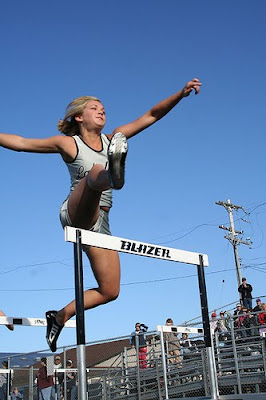 Shark vs. Train
Shark vs. Trainby Chris Barton and Tom Lichtenheld
Little, Brown and Company, 2010
Competition has been a big problem in my classroom this year. For a few of the kids, it's always a race to the door when they're called to line up, with no tolerance for someone getting their place back in line once the order is set. The drama of the soccer field at lunch recess lasts well into the afternoon, and both Connect 4 and Battleship were put away during indoor recess season because of constant (loud) bickering about who won or whose turn it was to play. Grades on papers are not seen as a reflection of one's hard work and progress in learning, rather they are numbers with which to "verse" one another.
Sigh.
I'm adding Shark vs. Train to my stack of beginning-of-the-year books so that we can start the year next year with a conversation about how ridiculous competition can be. (Yes, crazy me -- four days left and I'm thinking about next year already!!)
The set-up to the story is two little boys (sorry, guys, but yes, it's mostly your problem...) diving into a toy box and coming up with a shark and a train. The two toys go head-to-head in some situations where the winner is obvious -- in the ocean or on railroad tracks -- not so obvious -- roasting marshmallows or eating pies -- or downright tricky -- playing hide-and-seek or trying not to get shushed in the library.
In this book, the escalated competition is preempted by a call to lunch. Hopefully, in my classroom next year, it can be preempted by a humorous look at competition from the first day.
BONUS EXTRAS:
How the book came to be -- a peek behind the scenes by editor Alvina Ling at Blue Rose Girls.
7-Imp's chat with the author and illustrator.
Chris Barton's blog.
Tom Lichtenheld's blog.














